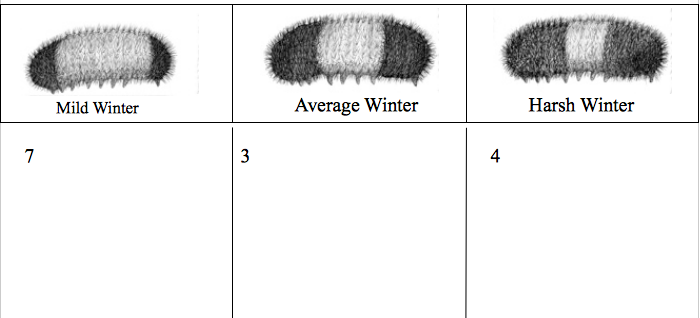Background Information:
The old Farmer’s Almanac said that you could predict the harshness of a winter by observing the color patterns on wooly bear caterpillars. It was said that if the orange band in the center of the body is greater than a third of the body, then it will be a mild winter. If the orange band is equal to the size of the black bands, it will be an average winter. However, if the black band on the sides of the body is larger than the orange band, it will be a harsh winter. Yesterday, I saw a wooly bear that was all black, and today, I saw one that was all orange.
Procedure:
This study can be an aspect of the Wooly Bear Week study (posted earlier). If a student brings in a wooly bear, students can check the size of the orange and black bands and predict the winter based upon their observations. However, older students can report the color pattern they observed and leave the animals in their natural habitat. Below is sample chart that shows the different patterns. My class has shared our data with local TV stations and they are always interested in a new angle on the weather.
In 2011, from mid September to mid October, I did not get many reports of wooly bears. My sample size was too small (14) to make any dramatic statements about the weather this winter. However, I thought the comments posted by Paul Larson on wooly bears was very interesting.





According to David Wagner, the early instars are all black or nearly so, with the black setae replaced by orange in progressive molts. That theory is not falsified by situations in which all-black and all-orange caterpillars are seen at the same time, as that could result from different hatch times. HOWEVER if the black specimens are as large as the orange specimens, the theory falls to the wayside, or at least is limited to a subset of the population. So encourage your project participants to measure the caterpillars they record!